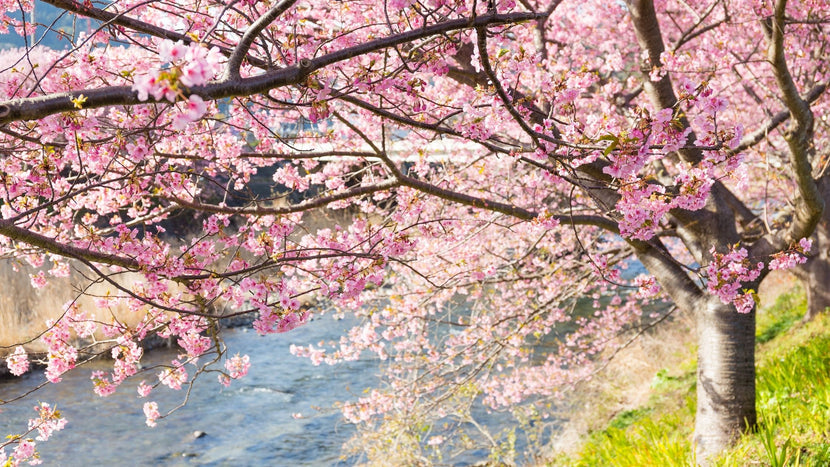How to Care for a Cherry Blossom Tree
Plant Guide

Ornamental Cherry Trees are relatively low maintenance once they are established, and they will thrive in your garden for 20 to 40 years. Most are known for their pink blossoms, but there are some varieties that have pure white blossoms that bring extra brightness to the garden.
Here are a few tips on how to care for a healthy Cherry Blossom Tree:
Choose a location with full to partial sun, adequate soil drainage, and ample room for the fully grown branches. We recommend that you allow 10 to 20 feet of space between trees so that you can enjoy their handsome growth habit. If planting near a house, be mindful of falling petals and falling leaves.
Most Cherry Trees will do well between zones 6 and 8, with some being more cold-hardy than others and thriving in zones 4 or 5 as well. If your area experiences an unusually warm spell before the last major frost, that warm weather could 'force' your blooming cherry trees to start to bud early. If this has happened and there is another hard frost still expected, you can protect the delicate buds by gently wrapping the whole tree in light cloth or burlap, using stakes to keep the cloth from touching the buds too much.
Ground Rules
Light
Flowering Cherry Blossom Trees require full sunlight to best grow. We do not recommend planting this tree in spaces that do not receive full direct sunlight.
Water
After you plant your Flowering Cherry Tree with a 50/50 soil mix, water your tree deeply. This tree can not survive in standing water, however most of the water will run away until the soil is fully soaked.’’
Soil
This tree is not particular to soil PH, but it grows best in rich soil options. It thrives best in well drained, moist, and fertile soil. Chose a 50/50 soil and compost option to ensure your tree lasts for years.
Food
Cherry Trees grow best if they are fertilized lightly in the spring once frost has passed with a well-balanced, extended-release, fertilizer such as espoma Tree-tone. Fertilize again 6 to 8 weeks later to encourage denser foliage or faster growth of young trees. We recommend Bio-Tone fertilizer when planting. Either chemical fertilizers or organic matter can be used successfully with Cherry Trees.
Mulch
We recommend that you mulch your Flowering Cherry Tree with either a ground hardwood mulch or a ground cypress mulch depending on your local availability. Any type of mulch will do but cypress or hardwood mulch will be of a higher quality and provide better nutrition overall as they breakdown.
Planting Process
- Remove a container-grown tree carefully from its pot and, if your tree's roots are balled and wrapped, carefully remove the wrapping.
- Water a container-grown or balled tree well before you begin, because this helps keep soil in place around the roots.
- Place the tree in a pre-dug hole that's at least 1 foot wider in diameter than its roots, ensuring that you plant the tree at the same depth as it was earlier.
- Backfill the hole with soil amended with compost and water the tree well, ensuring that there are no air pockets around its roots.
How Do You Know If My Cherry Tree Tree Is Over Fertilized?
When should I prune my Cherry Blossom Tree?
Are Cherry Blossom Trees Prone to Diseases?
Types of Flowering Cherry Trees
| Name: | Flower Color: | Bloom Time: | Grow Zones: |
|---|---|---|---|
| Kwanzan | Pink, double blooms | Late April | 4-8 |
| Okame | Pink | Early March | 5-9 |
| Snow Goose | White | Mid March | 5-8 |
| Yoshino | Light pink and white | Late March | 5-8 |
